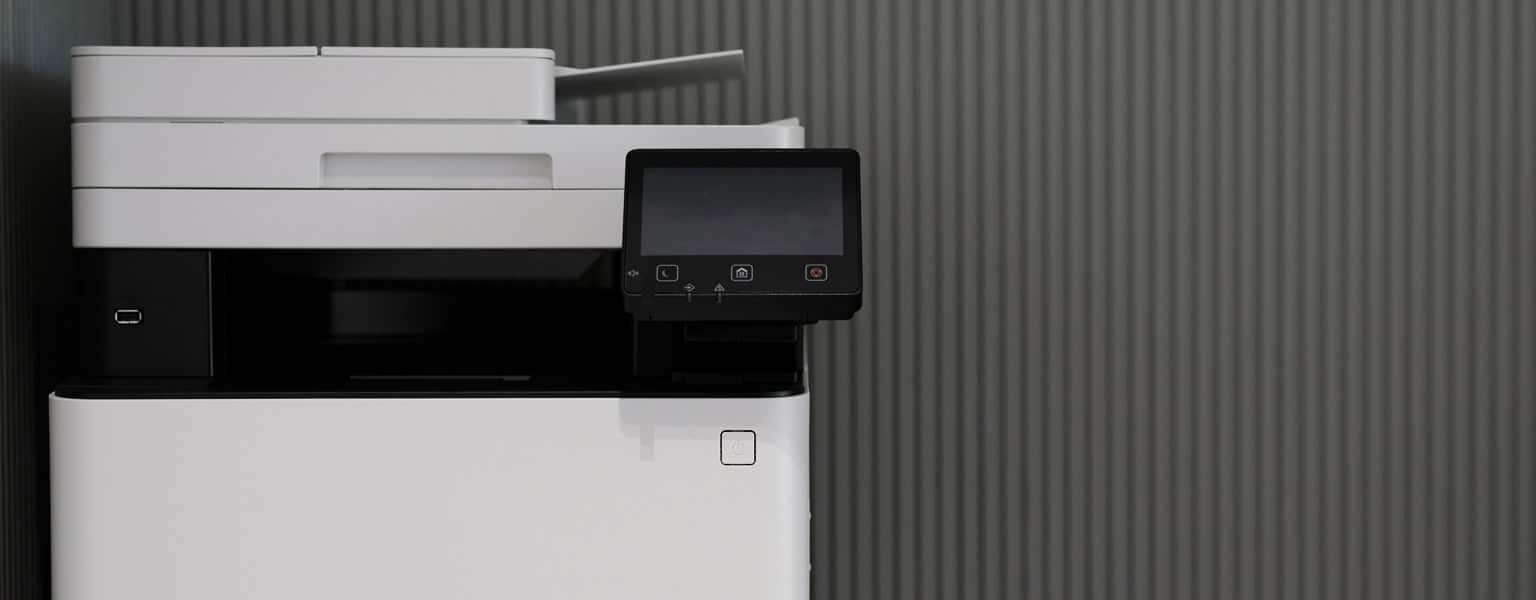Top Network and Cloud Print Security Risks to SMBs
Contents
Key Takeaways
Printers are part of your network — and that means they’re potential cybersecurity targets if left unprotected.
Network and cloud print security risks differ but both can expose sensitive data if overlooked.
Simple steps like encryption, access controls, and regular firmware updates go a long way toward keeping your print environment safe.
Managed print services (MPS) help SMBs monitor and secure their entire print fleet without adding IT headaches.
Printers may not get the same spotlight as servers or laptops, but in today’s connected offices, they’re very much part of your network — and, unfortunately, part of your attack surface too. That’s right: the same device that faithfully churns out invoices and reports could also be quietly inviting cyber trouble if it’s not properly secured.
As SMBs lean into hybrid work and cloud tools, that “humble” office printer isn’t so humble anymore — it’s a full-fledged network endpoint with access to the same sensitive data as your workstations and servers. And while it won’t text your IT team at 2 a.m., it can spill confidential data faster than you can say “low toner.”
From unsecured Wi-Fi connections to overly generous user permissions, network and cloud print systems can create more risk than most businesses realize. But here’s the good news: print security doesn’t have to be complicated (or boring). A few smart moves can keep your devices — and your data — running smoothly, securely, and maybe even a little more laser-focused.
Let’s take a closer look at the most common network and cloud print security risks for SMBs, and how to keep your business printing safely, efficiently, and with total peace of mind.
What Are Common Network Security Risks for SMBs?
When your printers are connected to the same network as your business data, they become part of your cybersecurity landscape — for better or worse. Many small and midsize businesses (SMBs) underestimate the risks that a single unsecured device can introduce.
Unsecured Printer Access
Without proper access controls, printers can become open doors to your network. Unauthorized users may send print jobs, access stored documents, or even exploit the device to gain deeper access to your system.
Outdated Firmware
Printers running on outdated firmware can be vulnerable to known exploits. Hackers often target older software versions that haven’t been patched — especially in busy offices where updates are easily overlooked.
Unencrypted Data Transmission
Print jobs often travel through the network unencrypted, meaning sensitive information like invoices, contracts, or HR documents can be intercepted mid-route.
Poor Password Hygiene
Yes, “admin” and “1234” are still out there. Default or weak credentials are one of the most common (and avoidable) print security risks SMBs face.
What Are Common Cloud Print Security Risks for SMBs?
Cloud printing offers major flexibility — remote access, mobile printing, centralized management — but it also brings its own set of cybersecurity considerations.
Misconfigured Cloud Settings
Improper configurations can leave print queues and document storage exposed to anyone who knows where to look. Ensuring proper user roles and permissions is essential.
Data in Transit and at Rest
Even with reputable cloud services, data must be encrypted both in transit and at rest. Documents temporarily stored in the cloud can be compromised if encryption isn’t consistently applied.
Third-Party Application Integrations
Many organizations connect their print environments with other business apps (like CRMs or file-sharing tools). Each integration introduces potential vulnerabilities if not secured and monitored properly.
Inconsistent Security Policies
When employees print from personal devices or remote locations, security policies can get patchy. A lack of unified oversight increases the chance of accidental exposure or unauthorized access.
How to Mitigate Print Security Risks
Managing print security requires more than antivirus software — it demands a layered strategy that includes both network and cloud protections.
- Implement Managed Print Services: A trusted provider can monitor your devices, update firmware, enforce policies, and detect threats before they become breaches.
- Use Access Controls: Assign user roles and require authentication for print, scan, and copy features.
- Regularly Update Devices: Schedule firmware updates and security patches as part of your routine IT maintenance.
- Encrypt All Print Data: Ensure all print traffic — local and cloud-based — is encrypted from end to end.
- Monitor and Audit Activity: Track usage and detect anomalies that could signal a compromised account or device.
Best Practices for Secure Printing
Keeping your print environment secure doesn’t need to be complicated — just consistent.
- Centralize Device Management: Simplify oversight with unified dashboards through printer fleet management or managed print services.
- Apply the Principle of Least Privilege: Give users only the access they truly need.
- Implement Secure Print Release: Require users to authenticate at the printer before documents are released.
- Educate Employees: Even the most secure systems fail if people print sensitive data carelessly or leave documents unattended.
- Back Up Configurations and Logs: Regular backups protect against data loss and simplify recovery after an incident.
Why It Matters
Your printers may seem harmless, but in a connected office, every device is a potential doorway. Taking a proactive approach to print security not only protects your network but also demonstrates your business’s commitment to data protection and client trust.
If you’d rather focus on running your business — not managing print security patches and access controls — Kelley Create can help. Our printer fleet management solutions and secure managed print services help SMBs close the gaps in their network and cloud print environments.
Learn more about our managed print and security solutions and see how we can help keep your data and documents safe.
FAQs
-
Printers are often overlooked endpoints — basically computers with paper trays. If left unsecured, they can store sensitive data, expose network credentials, or even be used as launchpads for broader attacks.
-
Managed print services (MPS) bring expert oversight to your print environment. They handle device updates, monitor for anomalies, enforce secure print policies, and keep your data protected — so you can print without panic.
-
Yes — if it’s configured properly. Using encrypted connections, verified users, and reputable cloud providers makes cloud printing safe for SMBs. The problem usually isn’t the technology, it’s the setup.
-
Network print risks stem from local devices and connections inside your organization, while cloud print risks involve how data moves to and from cloud servers. Both require protection — one at the device level, one at the data level.
-
At least quarterly, or anytime you add new printers, locations, or employees. Think of it as a “printer check-up” — like taking your network to the gym, minus the treadmill.



